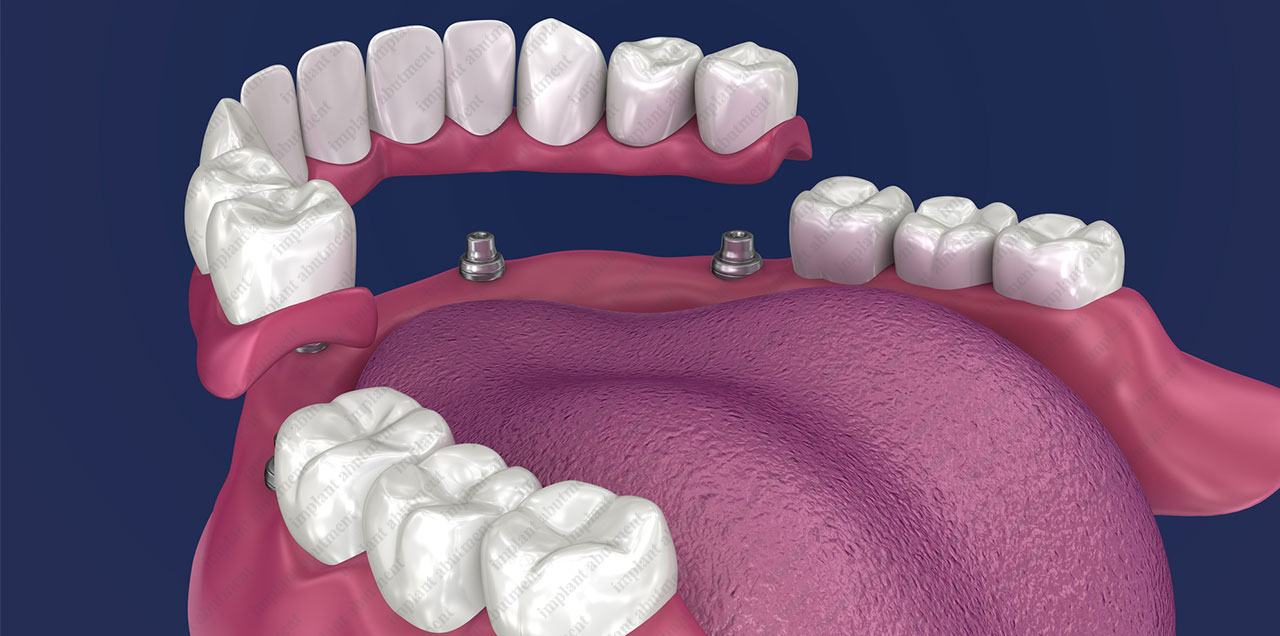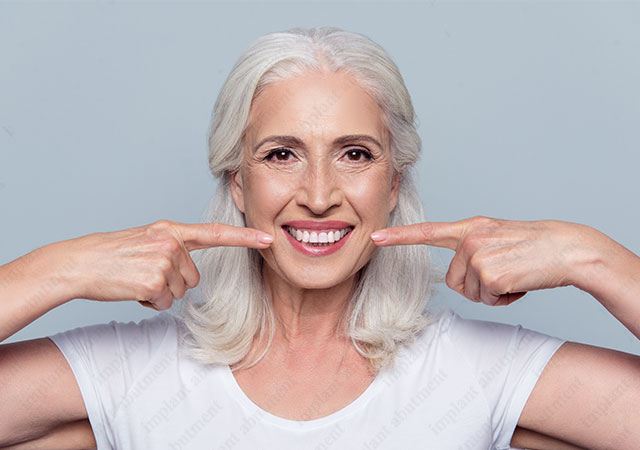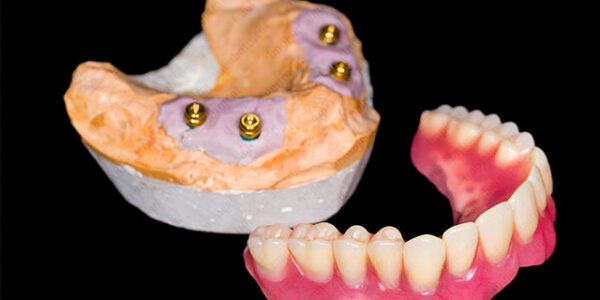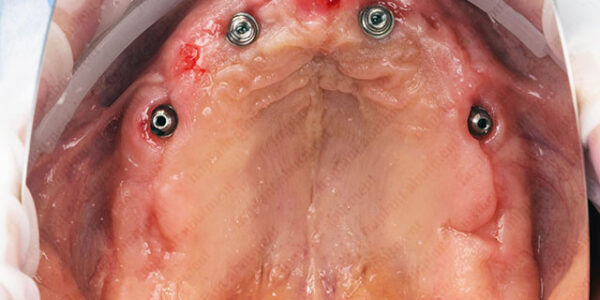Partial overdentures are a great option for patients who lack several teeth on a single arch, or for patients who have partial removable dentures and are not satisfied with their prosthetic system. Similar to the full overdenture, the partial overdenture is an implant-retained restoration, but rather than supporting an entire arch of prosthetic teeth, it supports several missing teeth, with implants and/or surrounding teeth used to help stabilize the system.
Depending on each patient’s individual anatomy, the overdenture system is typically supported by four or six implants and an equal number of multi-unit implant abutments placed along the dental arch. While partial overdentures consist of a denture system that is completely fixed to implants, another restoration solution that takes fundamental principles from both overdentures and partial dentures is the removable partial denture.
This system is made up of an implant-retained denture that the patient can insert and remove as is possible in a traditional denture system.
The benefits of partial overdentures
Filling in the missing tooth gaps along a dental arch comes with some potentially life-altering advantages. Apart from the obvious benefit of being able to chew and speak normally, there are long-term benefits related to dental bone health that must be understood. The presence of implants in the dental ridge facilitates bone stimulation, which results when force is exerted on the prosthetic system, for example when chewing. This stimulation promotes bone formation and can help restore the natural equilibrium between bone resorption and osseointegration in the jaw. This in turn helps maintain both alveolar height and vertical dimension of the surrounding bone, which if not maintained, can result in functionality issues, as well as altered facial height and appearance.
In addition to the overwhelmingly significant benefit of bone preservation in the mouth, there are many other benefits of the partial overdenture system that are important to mention. This type of restoration helps maximize chewing efficiency, provides optimal retention and stability of the restoration (especially when compared to non-fixed systems), reduces risk of sore spots and ulcerations on the gums caused from different types of dentures, and reduces damage to surrounding teeth which can ultimately increase their longevity.
Advantages over traditional partial dentures
Some patients may instinctively opt for the less challenging, lower-hassle option of partial removable dentures. When discussing restoration options with their dentist, patients can be taken aback by treatment costs, talk of invasive procedures and surgery, and long healing times associated with implant-retained solutions compared to their removable counterparts. However, there are numerous advantages of partial overdentures over the traditional partial denture which are important to convey to the patient. Over the long-term, a partial overdenture system will see a much greater return on its value than traditional partial dentures.
Removable partial dentures, also known as RPD’s, are subject to movements in the mouth, as they are not a fixed system. Similar to the role played by implant abutments, the surrounding teeth often serve as abutments to the RPD. Thus, the movements of the RPD can cause increased leverage force on the patient’s surrounding teeth and put them at risk of loosening, potentially resulting in loss of those teeth or requiring their extraction. Placing the prosthetic system on implants can mitigate the destructive torquing forces on surrounding teeth.
An advantage of implant-enhanced removable partial dentures over a fixed system is the reduced force on the implant. In a fixed system, the partial overdenture has the same relationship with the dental arch as a regular tooth in terms of force exertion and retention requirements and thus requires a more powerful connection between the implant and bone. Any scenarios where there is insufficient bone can cause complications with the restoration. With RPD’s, only a small portion of bone is required to attach, or anchor, the implant, due to the decreased force exerted on the system, making opportunities greater for restoration.
The case for partial overdentures
Partial overdentures provide a drastic improvement in quality of life for partially edentulous patients. Not only is functionality improved, but long-term crucial preservation of bone maintains the patient’s dental arch and facial construction, all of which lead to a more confidently-lived, healthier, happier life.





